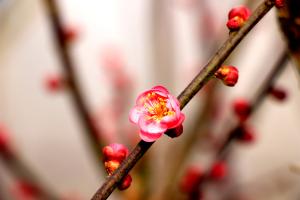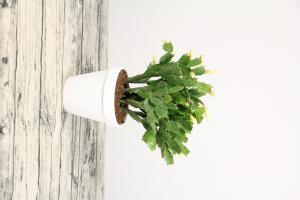How to Trim Back Potted Plants
Trimming back potted plants is an important part of maintaining their health and beauty. Regular pruning helps to promote new growth, prevent disease and pests, and keep the plant's shape and size under control. Here are some tips on how to trim back potted plants effectively:
1. Know when to prune
The best time to prune a potted plant depends on the type of plant you are working with. Some plants need regular pruning throughout the year, while others only need to be pruned once a year. Generally speaking, it is best to prune in the spring or early summer when the plant is actively growing. Avoid pruning during the fall or winter when the plant is dormant.
2. Choose the right tools
To trim back your potted plants, you will need a good pair of pruning shears. Make sure your shears are sharp and clean to prevent damaging the plant. If you are working with a larger plant, you may also need a pair of loppers or a pruning saw.
3. Identify what to prune
Before you begin trimming, take a good look at your plant and identify what needs to be pruned. Remove any dead or diseased branches or leaves first, as these can attract pests and disease. Next, remove any crossing branches or stems that are rubbing against each other. Finally, trim back any long or overgrown branches to control the size and shape of your plant.
4. Prune with care
When trimming back your potted plants, be sure to make clean cuts close to the main stem or branch. Cutting too close can damage the stem or create a wound that is vulnerable to disease. Avoid cutting too much off at once, as this can shock the plant and stunt its growth. Instead, make small cuts and step back to assess the plant's shape and symmetry as you go.
5. Consider the plant's needs
When trimming back your potted plants, consider their specific needs. Some plants, such as flowering plants, may need different types of pruning to promote new blooms. Others may benefit from regular pinching or deadheading to encourage new growth. Take the time to research your plants and learn more about their specific care requirements.
6. Clean up after pruning
After you have finished trimming your potted plants, be sure to clean up any debris and dispose of it properly. This will help prevent pests and disease from spreading. You can also give your plant a little boost by fertilizing it with a balanced fertilizer or giving it a good watering.
By following these tips, you can trim back your potted plants effectively and help them thrive for years to come. Happy pruning!

 how many times do yo...
how many times do yo... how many planted tre...
how many planted tre... how many pine trees ...
how many pine trees ... how many pecan trees...
how many pecan trees... how many plants comp...
how many plants comp... how many plants can ...
how many plants can ... how many plants and ...
how many plants and ... how many pepper plan...
how many pepper plan...
































